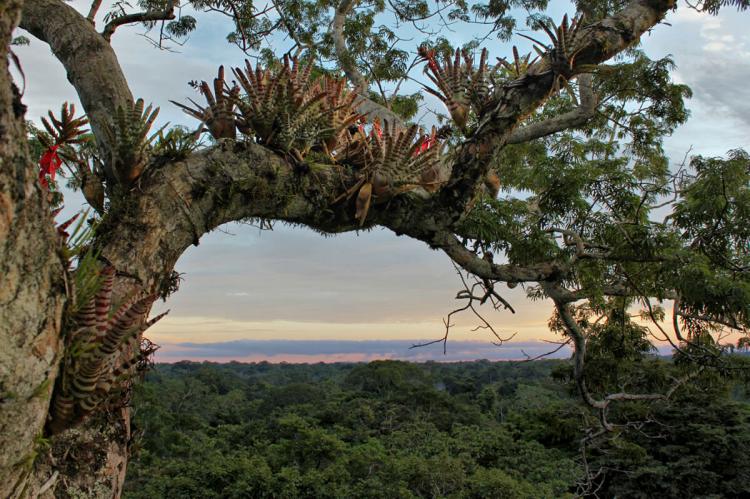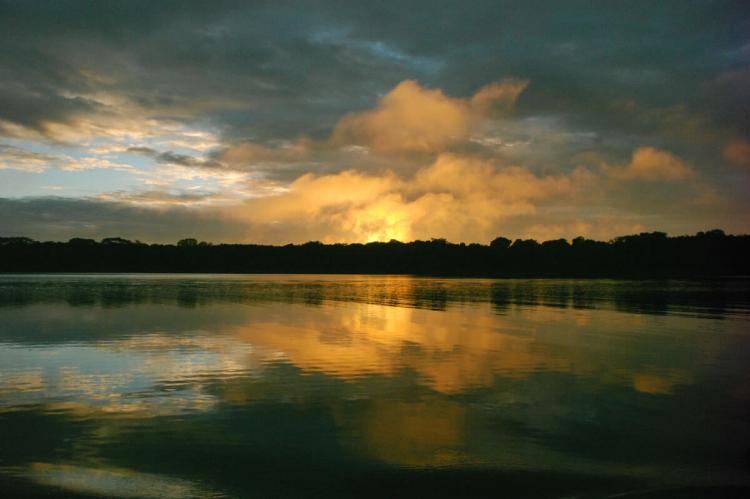Yasuní National Park and Biosphere Reserve (Ecuador)
Yasuní National Park and Biosphere Reserve are situated within the Amazonian region of northern Ecuador. Arguably the most biologically diverse spot on earth, it occupies an area within the claimed ancestral territory of the Huaorani indigenous people.
Yasuní National Park and Biosphere Reserve
The Yasuní National Park and the Yasuní Biosphere Reserve are in the Amazonian region of northern Ecuador, Napo Province. It is a convergence point for three unique regions: Equatorial, Andes, and Amazon.
Yasuní National Park is the core area of the Yasuní Biosphere Reserve and occupies an area of 9,820 sq km (3,780 sq mi). The total area of the Biosphere Reserve (including the core area, buffer zones and transition zones) is 16,820 sq km (6,494 sq mi).
The Yasuní protected area is home to two uncontacted indigenous tribes: the Tagaeri and the Taromenane. It is also within the claimed ancestral territory of the Huaorani indigenous people.
The rivers inside the reserve begin at the Andean foothills at altitudes of 300 - 600 m (1000 - 2000 ft). Napo, Yasuní, Cononaco, Nashiño, and Tiputini are the most important rivers that flow through the park. In addition, many indigenous people use the riverways within the National Park as the primary mode of travel.
Yasuní is located in the Napo Basin, a funnel-shaped basin of 98,445 sq km (38,000 sq mi). It originates in the eastern Ecuadorian Andes and expands southeast to the convergence of Peru's Napo and the Marañon rivers.

Map depicting the location of Yasuní National Park
Climate
Annual rainfall can reach 3,800 mm (150 in), with an average monthly rainfall of 260 mm (10.24 in). The wettest month is usually July, with an average precipitation of 400 mm (15.75 in), and the driest month is December, with 130 mm (5 in). The rainfall seasonality is bimodal: there are two wet seasons: March through July and October through November.
The mean annual temperature is 25.5 °C (77.9 °F), with a mean maximum temperature of 30 °C (86 °F) and a minimum of 23 °C (73.4 °F). November, December and January are the hottest months, whereas July is the coldest. The relative humidity is high throughout the year (83-90%).
Topography
The terrain is very sinuous despite being in the Amazonian plains. Except for Rio Napo, which originates in the foothills of the Andean Cordillera, rivers crossing the national park originate at altitudes from 300 m to 600 m (1000 to 2000 ft) above sea level.
The topography is represented by low plains alternating with the foothills of the Andean chain, with a softly inclined platform supported by the Guyana-Brasilian shield that extends from the south of Colombia to Peru.
Ecosystems
The protected area lies within the Napo moist forests ecoregion and is primarily rainforest. The dominant ecosystem is the Humid Tropical Rainforest, part of the upper Amazon basin.
Three main vegetation types occur: Terra firme, which is found in the high relief areas and is not subject to flooding; Várzea, a forest type subject to periodic flooding; and Igapo, which is in the permanent or near permanent flooded forest.
Biodiversity
Yasuní is arguably the most biologically diverse spot on Earth. A higher diversity of reptiles, amphibians, insects, birds and bats has been found here than anywhere else in South America and possibly the world. Moreover, it is at the center of a small zone where amphibian, bird, mammal and vascular plant diversity reaches maximum levels within the Western Hemisphere.
Yasuni is home to approximately one-third of amphibian and reptile species. The park also harbors high levels of fish diversity, with 382 known species. Yasuni is also home to at least 600 bird species, which comprises one-third of the total native bird species for the Amazon. In addition, the reserve hosts more than 200 mammalian species.
Socio-Economic
The Cononaco River region is traditionally a settlement area for indigenous communities such as the Huaorani, Aucas and Quichuas. More than 9,800 people are engaged in agriculture (coffee, bananas, yuca, paw paw, citrus fruit, maize, and achiote), fishing, hunting, and gathering forest products.
The Tiputini Biodiversity Station is a scientific field research center in the Ecuadorian Amazon. It is located in the province of Orellana, on the northern bank of the Tiputini River. Although separated from the Yasuní National Park by the river, the station is part of the Yasuní Biosphere Reserve.










